By Kevin Armstrong
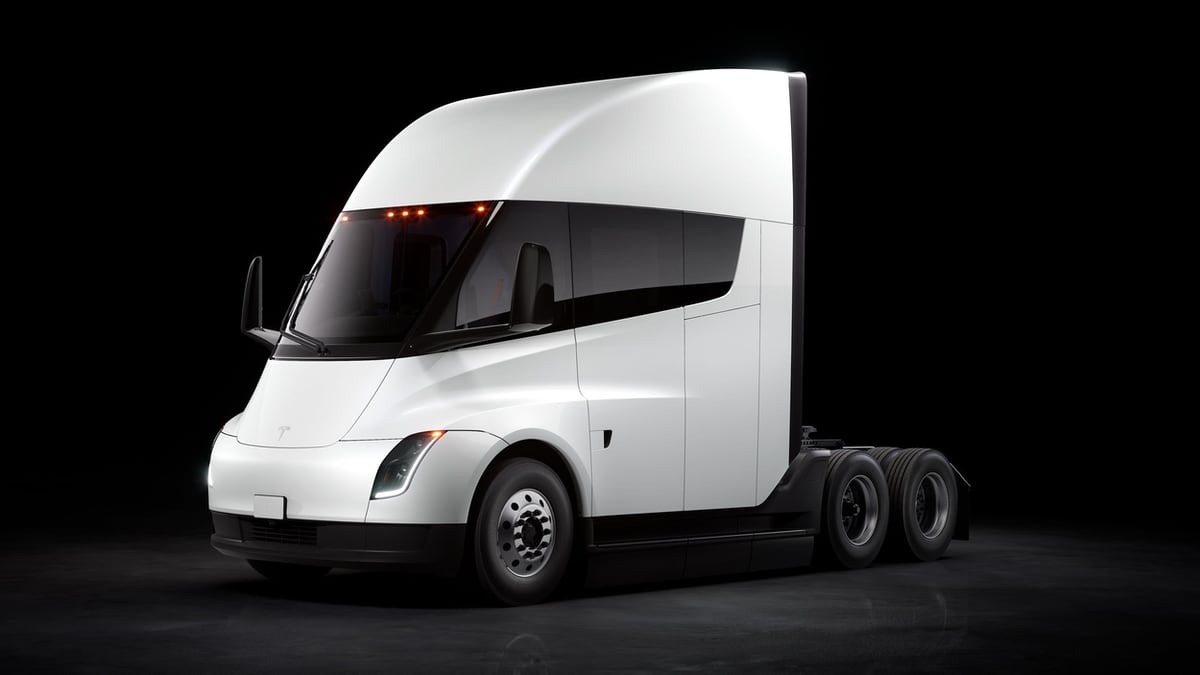
Tesla showed off its Semi for the world to see on December 14, 2017. Soon these technological masterpieces will be seen on highways around the world.
Deliveries will start on December 1st, with PepsiCo being Tesla's first customer. However, there have already been several sightings of the Semis. The Tesla Semi website refers to these vehicles as Beasts, and while we don't know everything about them until they are delivered, there's plenty of information to weave together. From what we do know, it's safe to say that Tesla is shaking up the transportation sector — again.
The Semi Beginning
Elon Musk first mused about the Tesla Semi in his Master Plan Part Deux, which appeared on the company website on July 20, 2016. Under the header: Expand to Cover the Major Forms of Terrestrial Transport, the CEO went further than sedans and SUVs. "There are two other types of electric vehicle needed: heavy-duty trucks and high passenger-density urban transport.
Both are in the early stages of development at Tesla and should be ready for unveiling next year (2017)," wrote Musk. He also added, "we believe the Tesla Semi will deliver a substantial reduction in the cost of cargo transport while increasing safety and making it really fun to operate."
Performance
When Musk introduced the Tesla Semi in 2017, he compared it to current semi-trucks on the road today and to a $2 million supercar, the Bugatti Chiron. The first features the CEO talked about were performance, but not just any performance.
Instead, Tesla referred to it as BAMF Performance. I'll let you figure out the acronym. While the appearance alone will make the Semi a standout at truck stops, it's the performance that will change the trucking industry.
Tesla Semi Unveiling
The Semi was initially going to have four independent motors; however, that's now three. Nevertheless, it doesn't seem to have slowed the vehicle down. "We wanted a vehicle that feels incredible, that accelerates like nothing else," said Musk while showing a video of the Tesla Semi reaching 60 miles per hour in five seconds without a load. It can also reach 60 miles per hour fully loaded with the maximum 80,000 pounds gross vehicle weight in 20 seconds.
As for up a hill with the full weight, current diesel trucks achieve 45 miles per hour at a 5% grade; the Tesla Semi will do 65 miles per hour at the same degree.
The Semi's Range
While the speed and acceleration are undoubtedly impressive and a considerable improvement over the current diesel trucks on the road, the range is the industry's most important factor. Tesla states that its Semis have a 500-mile range at maximum gross vehicle weight and highway speeds. This number is significant because 80% of trucking routes are 250 miles or less. "You can deliver a load out to the middle of nowhere and come back," said Musk.
"We designed the Tesla truck to be like a bullet, whereas normal diesel trucks are designed more like a barn wall; this is a bullet," said the Tesla CEO. The Semi can generate the performance and the range due to the design. The drag coefficient or wind resistance of the regular diesel trucks is a .65 to .70. The Tesla Semi scores a 0.36, cutting the regular diesel truck drag in half and even beating the Bugatti Chiron score of .38.
The sleek nose and flat bottom are accompanied by side flaps that adjust to the trailer. These features help cut the drag and increase the range.
Charging the Semi
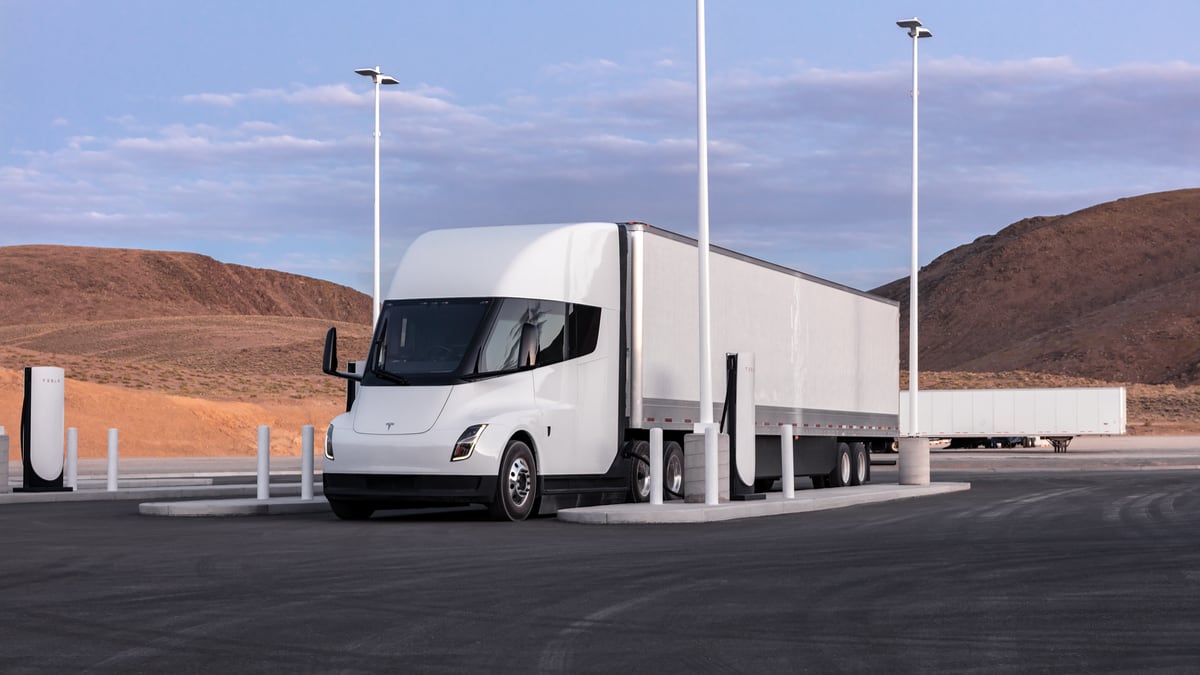
The Semi can run on sunlight because Tesla is rolling out solar-powered Megachargers and a guaranteed low electricity rate. The Megachargers will power up a Semi that is empty to 70% in 30 minutes. That time is vital to note because, in most jurisdictions, drivers must stop every six hours for a 30-minute break. The company says that the Semi will have added 400 miles in half an hour, which can last another six hours. Additionally, these chargers will be at destinations that would allow owners to charge the Semi while it is being loaded or unloaded.
Displays and Software
The Semi's interior is most similar to the Model 3 or Model Y.
The Semi lacks an instrument cluster but features two horizontal displays, one to either side of the driver.
The right display appears to contain the traditional launcher we have in today's Teslas with access to music, phone, cabin temperature and more, while the left display contains truck-specific features at the bottom, such as tire PSI, trailer air supply and parking brake functions.
Although the software can be changed at any point, the best way to describe the vehicle's current software is to compare it to a Model 3/Y.
The Semi essentially takes the display of the Model 3 or Model Y, and splits it down the middle.
The left portion of the display that contains the speedometer, gear and battery indicators and the vehicle's visualization are displayed on the Semi's left display.
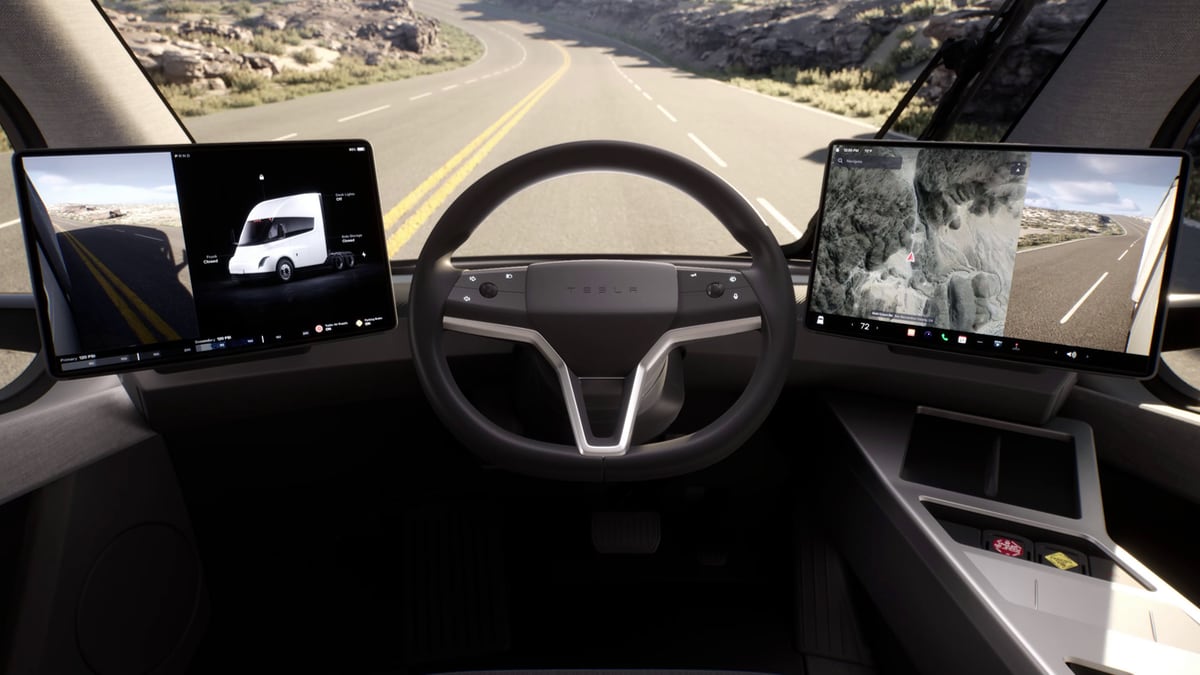
The right portion of the display on a Model 3 which includes information such as maps and apps is displayed on the Semi's right display.
However, Tesla isn't taking up the entire display with these features. About one-third of each display appears to be reserved for always-on blind spot camera monitors.
Battery
Although Tesla hasn't released the exact size of the batteries in the Tesla Semi, they have released enough information for us to accurately assess its size.
Tesla has said that the Semi will achieve an efficiency of less than 2 kWh per mile (1.24 kWh per km). Tesla has also said that the Semi will have a range of approximately 300 or 500 miles.
With these two bits of information, we can speculate that the Semi will be available in two versions. A "Long Range" model that will have approximately a 1,000 kWh, or 1 MWh battery, and a "Standard" version with about a 600 kWh battery.
For comparison, a 2022 Model S contains a 100 kWh battery, so the Tesla Semi will have a significantly larger battery at 6x to 10x the size of its smaller cousin.
Having a larger battery will allow the Semi to charge faster than Tesla's current models since the current can be spread across more batteries.
Safety
The Semi comes with the same safety features as Tesla's existing vehicles, the same kind of standards that have earned Tesla countless accolades. The Semi has Enhanced Autopilot, Automatic Emergency Braking, Automatic Lane Keeping and Forward Collision Warning.
The company also believes that moving the driver seat to the middle of the vehicle makes the Semi safer if it is involved in a crash. It has a low center of gravity due to the battery pack's location at the bottom and middle of the vehicle. That is the same as current Teslas, reducing the vehicle's chance of rolling over. "Jackknifing is impossible," declared Musk. He said that due to the independent motors, the Semi would detect a jackknifing situation and adjust the torque to the wheels needed to keep the vehicle from skidding out of control. "Your worst nightmare is gone with this truck. Gone. You never have to worry about it."
Driver Experience
When it comes to the experience of driving a Tesla Semi, Musk summed it up best, "it's like driving a Model S or X or 3. It's just big." Today, big trucks on the roads can have anywhere from 10 to 18 gears . That's a lot of shifting. Operators of the Tesla Semi need to simply shift into drive. It's a lot less fatiguing and lets truckers focus more on the road.
The driver's seat is in the center of the expansive cockpit that is also tall enough that someone can stand in it. The videos and pictures have failed to show the sleeper cab portion of the vehicle. However, there is a significant amount of room behind the cockpit to house a sleeping area.
Reliability
At the unveiling, Musk made a shocking promise; he guaranteed that the Semi will not break down for a million miles. He was confident in that number because of the independent drivetrains. If one motor stops working, the others can pick up the slack. Musk said if just two of the motors were active, the Semi would still beat a diesel truck in performance.
Trucks put brakes to the test because they haul so much weight. But, again, like other Teslas, the brakes will be used as generators and put back energy into the battery. "Brake pads literally last forever," said Musk. Removing the internal combustion engine also means no transmission to maintain, emissions scrubber or differentials.
The Semi has thermonuclear explosion glass. Musk quipped, "it survives a nuclear explosion, or you get a full refund." He pointed out that, on average, semi-trucks' windshields crack at least once a year. Trucks are not legally allowed to drive with a cracked windshield in several areas worldwide. That means a single crack could park a trucker for an undetermined amount of time waiting to get fixed. The Tesla armored glass takes away that risk.
Just like other Teslas, the app will be available for the Semi. That feature includes remote diagnostics, predictive maintenance, location tracking, and connection to Tesla Mobile Service.
Cost of Ownership
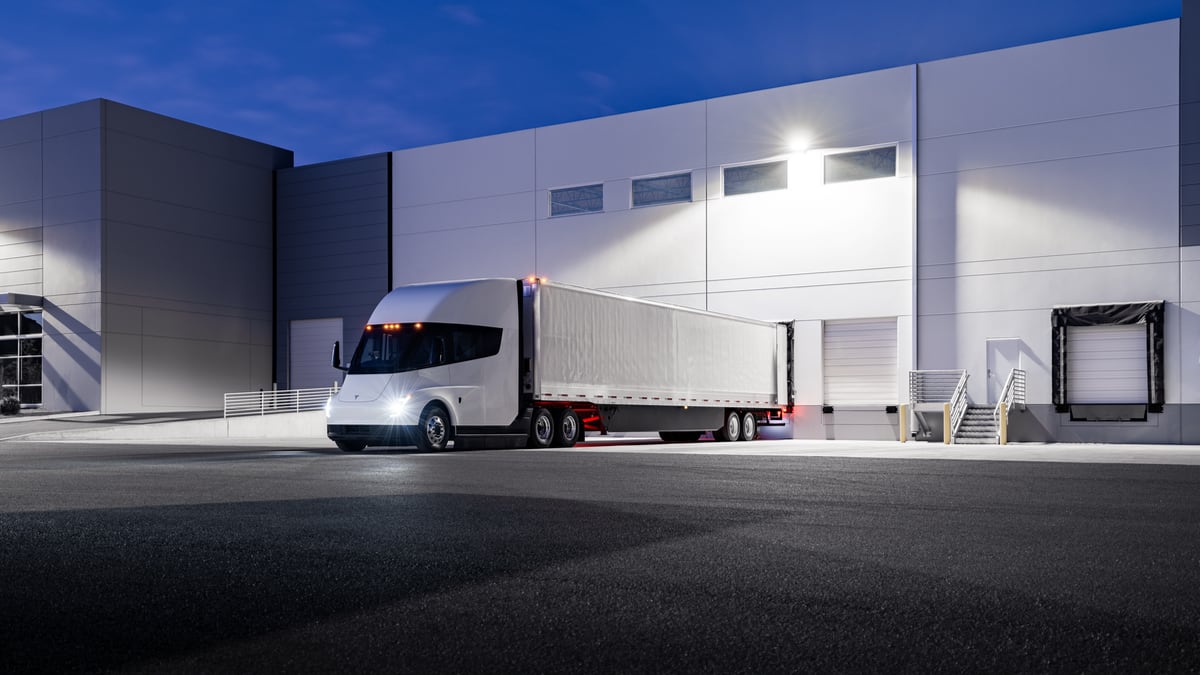
Trucking is a unique business. The costs are difficult to predict mainly due to the fluctuations in the cost of diesel and maintenance. When the Semi was unveiled in 2017, the diesel fuel price per gallon was $2.50; Five years later, it has more than doubled.
Tesla estimates that operators will save approximately $200,000 over three years because electricity is 2.5 times cheaper per mile. There will also be considerable savings by not having to leave the truck in the shop for routine maintenance and less time off the road for cracked windshields.
The Semi's aerodynamics produce even bigger cost savings if they operate in convoy. It's estimated a three-truck convoy averaging 60 miles per hour would cost $0.85 per mile. That price not only beats diesel trucks but also trains.
Buyers
Big name companies were some of the first to put down a deposit. Walmart ordered 130 Semis, UPS purchased 125, Pepsi is waiting for 100, Anheuser Busch asked for 40, and FedEx has reserved 20.
Other names reported to have bought the Semi include Sysco, DHL, Ryder and Loblaws. It's believed that several independent truckers have also secured the Semi. Obviously, Tesla is using its Semi. The attention-grabbing technological breakthrough has been spotted delivering Tesla products to dealerships in California.
A Megacharger has been installed at the Pepsi facility in California as well. Expect more companies to jump on board as these impressive beasts start to be spotted on highways worldwide.
While Tesla has closed reservations, buyers in the United States may be lining up to get in once Tesla starts retaking orders. The Inflation Reduction Act announced in July could net Tesla Semi buyers upwards of $40,000 in incentives.
By Gabe Rodriguez Morrison
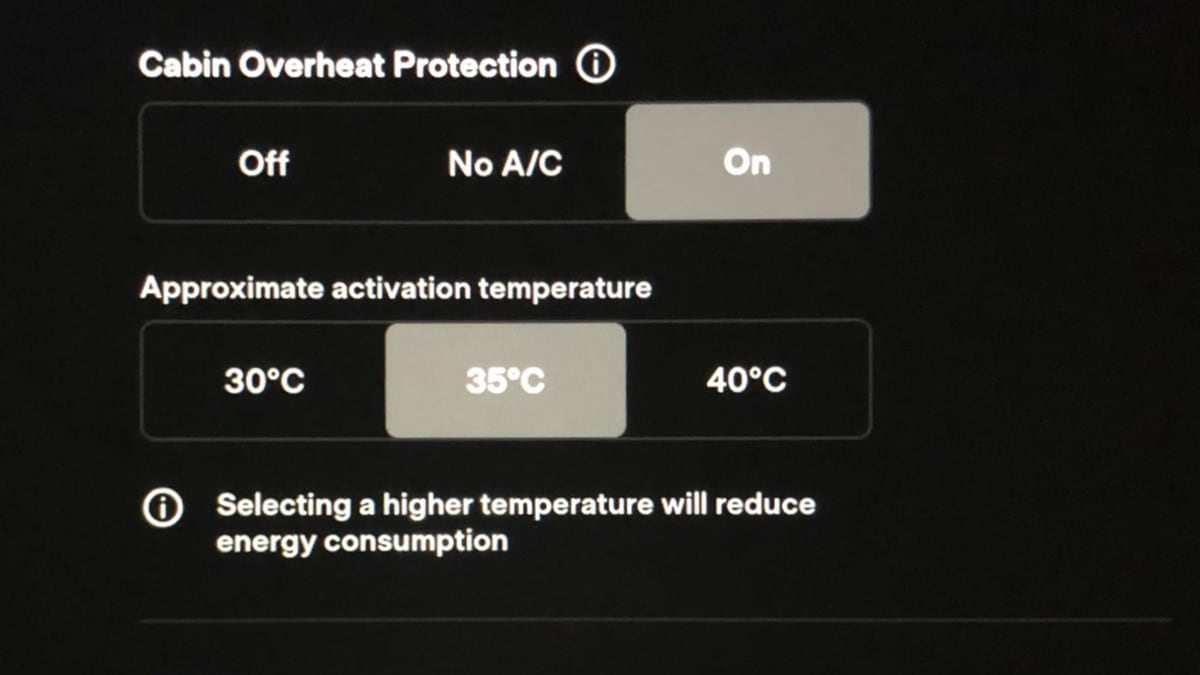
Tesla has started rolling out its most recent update, version 2022.36.1, which includes some exciting new features.
Release notes from 2022.36 revealed some new features last month, including the updated Energy App, Supercharger details, car unlocked notifications and new language support.
With the release of 2022.36.1, there are even more features to explore.
Video of the New Energy App
Cabin Overheat Protection
Cabin Overheat Protection (COP) is a fantastic feature available on all Teslas. If the inside of your vehicle gets too hot, COP will automatically turn on the fans, helping to cool down the interior of the car.
Alternatively, COP gives you the option to use the AC to keep down the temperature of the car even further, although this option uses more energy.
Until now, the temperature at which Cabin Overheat Protection is activated has been set at 105° F (40° C), and there hasn't been a way to configure it.
Back in July, Elon Musk said that Tesla will allow users to customize the activation temperature for COP in a future update.
Now, with update 2022.36.1, you can adjust the activation temperature from within the vehicle. You can pick from three preset temperatures, 90° F (30° C), 95° F (35° C) and 100° F (40° C).
Keep in mind that selecting a lower temperature will drastically increase energy usage while the vehicle is parked.
To choose the activation temperature for Cabin Overheat Protection according to your preferences tap Controls > Safety and scroll down to Cabin Overheat Protection.
Caraoke
Caraoke is Tesla's version of Karaoke that allows users to "sing your heart out with friends on a road trip — or by yourself" using its "massive library of music and song lyrics" in multiple languages. This feature was previously available to legacy Model S and X owners, as well as Model 3 and Y owners.
However, the feature has been noticeably absent in Tesla's latest flagship models, but with the release of 2022.36.1, Karaoke fans can rejoice.
In addition to being able to use Caraoke on the front display of the new Model S and Model X, users can also display the lyrics on the rear display, allowing rear passengers to join the fun.
To add or remove vocal tracks during playback, tap on the microphone icon on the 'Now Playing' screen.
Video of Caraoke on the new Model S
Karaoke on the rear screen in @Tesla Model S!
— eddy (@MagnetFight) October 6, 2022
2022.36.1 update is a ton of fun
Sorry FSD Beta, you're gonna have to wait@JbTeslaman @teslascope @NotATeslaApp @RealTeslaNorth pic.twitter.com/JN1ZcSXXTK
Dynamic Brake Lights
Dynamic brake lights have also been added to more countries with the release of 2022.36.1. Now, the feature is available in most of Europe, Australia, New Zealand, China and some additional countries. It's available for the Model 3 and Model Y with this release.
The release notes state: "If you are driving over 50 km/h (31 mph) and brake forcefully, the brake lights will now flash quickly to warn other drivers that your car is rapidly slowing down. If your car stops completely, the hazard warning lights will flash until you press the accelerator or manually press the hazard warning lights button to turn them off."
Video of Dynamic Brake Lights
Autopilot Disengagement at Highway Merges
In the European Union, some of Autopilot's functionality has been reduced due to government regulations. Autopilot will now disengage on the highway if the vehicle is expected to merge onto a lane that has a painted line.
The vehicle will display an alert and automatically disengage, putting the driver in control unless the turn signal is used to switch lanes
Sentry Mode Live Camera Access
Another useful feature included in the 2022.36.1 release is Sentry Mode Live Camera Access which has been expanded to additional countries including Singapore, Australia, and New Zealand among others.
For Tesla owners with Premium Connectivity, users can now view their car's surroundings directly from the Tesla app. This feature only works while the vehicle is parked and can be used to assess the vehicle's environment before returning to it. Sentry Mode Live Camera is end-to-end encrypted and cannot be accessed by Tesla.
To enable or disable, tap Controls > Safety > View Live Camera via Mobile App' from the touchscreen display.
Video of Sentry Mode Live Access
Improvements to Mobile App
With update 2022.36.1 Tesla has also made several improvements to its mobile app. The app will now display information for the currently selected song and if the vehicle's GPS is being used, it will also display the destination and ETA in the app.
We also took a closer look at these new app features.
The 2022.36.1 release is host to some fantastic new features and has expanded old features to many new regions. You can also read the full release notes. Additionally, the latest 2022.36.2 release includes some minor bug fixes.
By Lennon Cihak
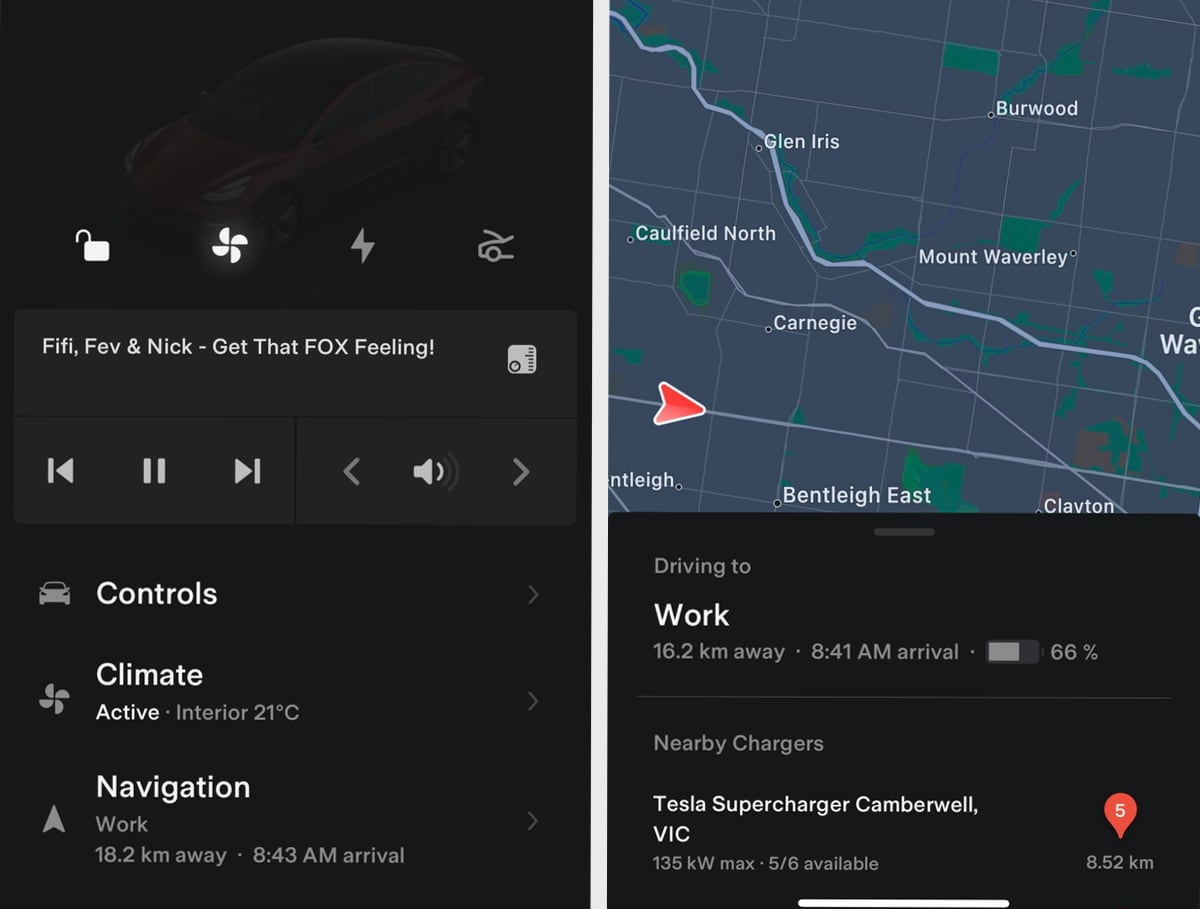
Tesla has now started rolling out update 2022.36.1 (release notes). With this update Tesla's mobile application will now show users additional information for the media that’s playing in the vehicle, such as the song title, artist, and destination information.
The automaker has rolled out a number of improvements to their mobile app over the last few months, including the ability to order a vehicle directly in the app. Earlier last month, an app update suggested that Tesla would be adding a powered frunk to their vehicles.
This has not been confirmed by CEO Elon Musk or Tesla. Many owners have taken it upon themselves to add aftermarket parts to motorize the front trunk.
Song Details
With Tesla’s newest update to their mobile app, owners will now be able to see a song’s title, artist name, as well as the volume levels, pause/play, and forward and reverse.
The song details will show up directly above the pause/play buttons that were previously displayed.
Destination
Additionally, if the driver is using GPS to navigate to a specific location, the mobile app will display details about their destination.
This information will be displayed in the "Location" section of the app. When the GPS is in use, the location section will be renamed Navigation and it will display the driver's destination, distance, and ETA directly on the main app screen.
If you tap into the Navigation section, you'll be greeted by a map with the vehicle's location and nearby Superchargers like before, but you'll also see the vehicle's destination details.
In addition to displaying the vehicle's set destination and ETA, the app will also display the car's expected state of charge will be upon arrival.
This information is helpful as it provides additional transparency for owners into their vehicles’ battery consumption and how they’re being used. Tesla is also in the process of rolling out updates that include major revisions to their Energy application within the vehicle.
These improvements include the battery’s state of charge upon leaving and arriving and what the main causes of battery drain are.
For example, if it’s really hot outside and your A/C is set to a low temperature and the fans are blowing on 10, the vehicle will display how much power your A/C is consuming. The Energy application will also show driving, battery conditioning, elevation, and “everything else,” like charging a mobile device, onboard computers, lights, audio system, and more.
As we continue to see big updates to Full Self-Driving Beta, we’re sure to see more improvements to the mobile app as they continue to add helpful new features to the vehicle.
These new features require Tesla app version 4.13 or later and Tesla's 2022.36 update.
"about" - Google News
October 08, 2022 at 09:57PM
https://ift.tt/uKaBL9s
Everything We Know About the Tesla Semi - Not a Tesla App
"about" - Google News
https://ift.tt/GDIKjTs
Bagikan Berita Ini














0 Response to "Everything We Know About the Tesla Semi - Not a Tesla App"
Post a Comment